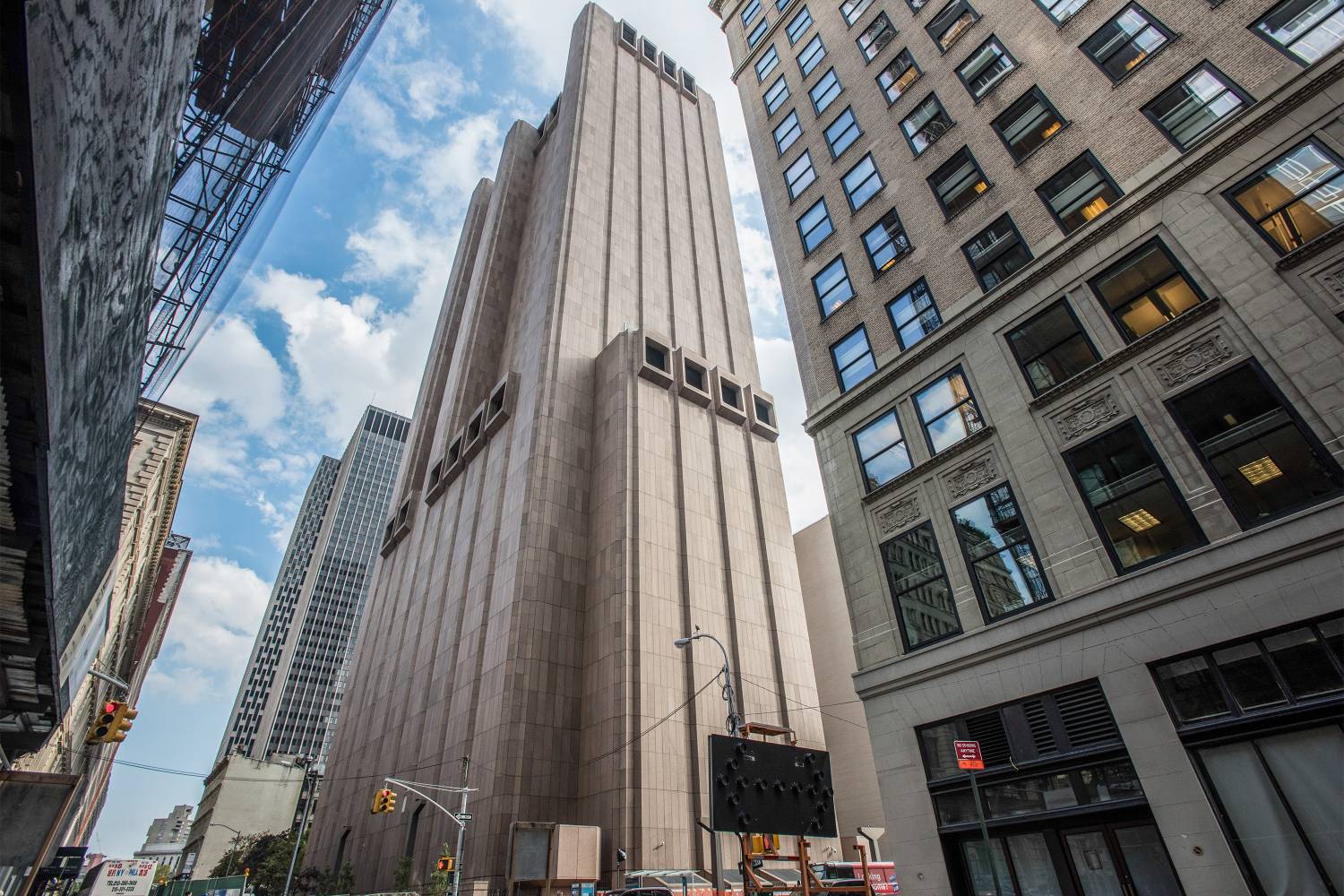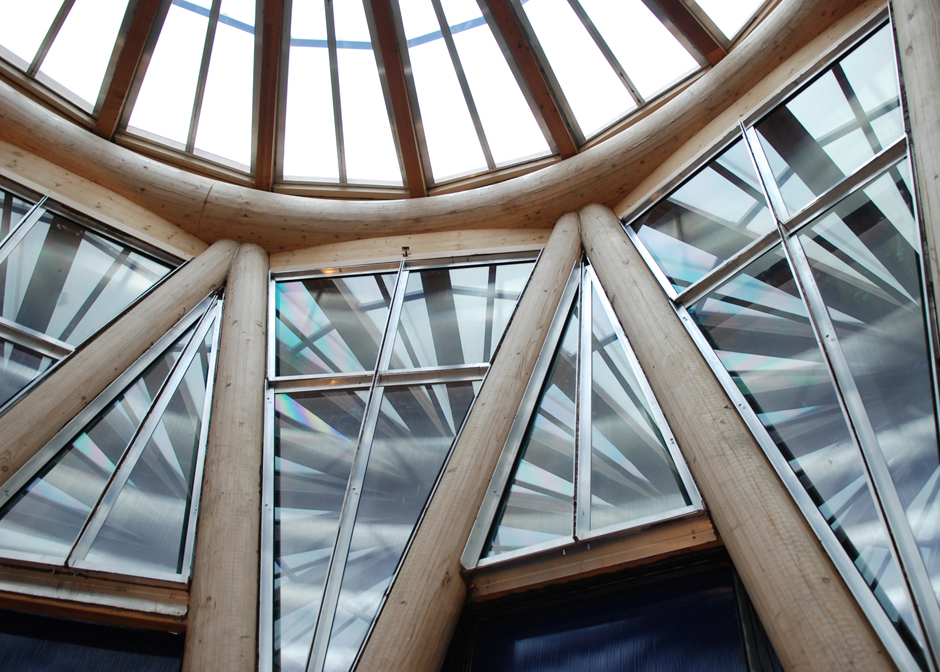It’s not time to eliminate windows—it’s just time to make them smarter.

With concerns around climate change growing each day, many municipalities such as New York City, Boston and even small towns such as Greensburg, Kansas, are doubling down on reducing their footprint by closely examining each possible angle for a way to limit their greenhouse gas emissions.
This has led to not only an influx in green initiatives such as reducing single-use plastics and installing more EV charging stations nationwide, but also municipalities taking a much closer look at what can be done to make their existing buildings and future building projects more efficient.
Buildings are known to be one of the foremost contributors to greenhouse gas emissions – in fact, buildings account for 70 percent of greenhouse gas emissions within New York City. And while many approaches to combating building-based emissions are being pursued – including installing more efficient insulation and increasing solar capacity – one of the most peculiar ideas is to begin constructing buildings with minimal or no windows.
Much maligned for poor solar heat gain prevention and insulation, windows have long been a target when it comes to building efficiency. Yet, while these issues may have been legitimate concerns in the 1990s and earlier, windows have actually quietly emerged as one of green building’s greatest allies, while maintaining and even enhancing workplace sustainability and comfort for employees.
Here are four reasons why windowless buildings aren’t needed, and also why windows represent the future of sustainable building.

1) Daylight Without the Heat
The idea of windowless buildings is not a new one – in fact, one of the most famous windowless skyscrapers, 33 Thomas Street in New York City, is celebrating its 45th birthday this year. Yet, while cutting out windows and replacing them with stone or other “light proof” building materials might seem like the only solution for eliminating heat gain from light, the fact is that windows have come a long way since 1974 when 33 Thomas Street first opened. A windowless building may be fine to house telecommunications equipment as 33 Thomas Street was designed to do, but it is not desirable for human occupancy. About half of heat from daylighting comes from infrared and the other half from solar heat gain from visible light. Low emissivity coatings on glass have been around for about the same amount of time as 33 Thomas Street, and do a good job of blocking IR. But the challenge until recently has been how to deal with controlling solar heat gain while maintaining a connection with the outside world.
One solution that is growing in popularity is variable tint “smartglass” using Suspended Particle Device (SPD) light-control technology. It allows users to control and instantly vary the tint of glass to control the amount of light coming into a structure or vehicle. This glass can be controlled by almost any building control system, or use inexpensive sensors such as motion detectors, photocells, or even your smart phone or simply wall switches and dimmers to vary the amount of visible light coming into a building. It can block up to 95 percent of heat from entering a building or structure. In a sunroof using this technology offered by Mercedes, their tests show that it reduces temperatures by 18 degrees. So imagine reducing the temperature inside your home or car from 90 degrees to 72 degrees without using the air conditioning! Add to this the ability to optimize and use daylighting more effectively for interior illumination by dynamically varying the tint of glass, and you also reduce the costs of hardware for lighting, and the cost and amount of energy to power it. Meaning, there is no longer a need for builders to choose between daylight or temperature efficiency – they can simply have both.
2) Glass is Smarter than Ever
A window is not just a window anymore. Gone are the days of a simple pane of glass being installed and then left to passively cope with varying degrees of exposure. Instead, today, windows are not only built to deliver better efficiency, but they are also smarter than ever as well. Thanks to advances in IoT, modern windows can now be dynamically tuned to tint and un-tint autonomously or through a quick touch of a button to maintain the optimally efficient environment within a building. This allows inhabitants or building managers to not only better control conditions on one side of a building based on exposure, but on a floor-by-floor, or even a window-by-window level – all in real-time if using SPD smart window technology, which instantly adjusts according to environmental conditions.

3) Near 100 Percent UV Rejection
An additional element of comfort for inhabitants is UV exposure. Obviously, stone, wood and other impregnable materials reject virtually all UV rays. The thing is…so do modern windows. Capable of blocking over 99 percent of UV radiation, smart windows using SPD light control technology, for example, is also tremendously effective at blocking out these rays. Meaning, that both comfort for inhabitants is maintained, and any light sensitive materials within a space are also being protected from UV damage – all without compromising anything when it comes to external views.
4) Worker Productivity
As business owners, how to design a comfortable and empowering workplace is one of the most important decisions we can make. And given the clear benefits that light permittance has on employees, figuring out how to “lighten up” the office is an often overlooked aspect of creating a workspace that functions on multiple levels.
According to recent research, 80 percent of office workers say that having great lighting in the office is important to them. Moreover, 40 percent of workers have to deal with poor lighting everyday, which can have detrimental effects on morale and general performance. Therefore, while reducing the amount of light coming into a building – by way of shrinking windows or eliminating them completely – may seem like a good idea at first, there are hidden impacts in terms of your workforce that can have much deeper consequences.
Striving to cut down on greenhouse gas emissions is incredibly important. However, windows no longer need to be “public enemy number one” in the journey to build more sustainable structures. Rather, by adopting advanced glass technology, we can help improve efficiency without sacrificing the comfort and views that are among our buildings’ most treasured assets. When it is cold out, you put on a jacket. When it is hot, you take it off. Why can’t the outside glass skin of a building do the same thing and work symbiotically with the heating, air conditioning and lighting systems inside a building to reduce its carbon footprint, save energy, make people more comfortable, and bring beneficial daylighting into your home or office when you want it, and control it when you don’t? With modern window technology, you can do this. It’s not time to eliminate windows—it’s just time to make them smarter.


As usual Kay Sargent really, really gets it a deep level. The analogy with the feckless demise of loss is brilliant